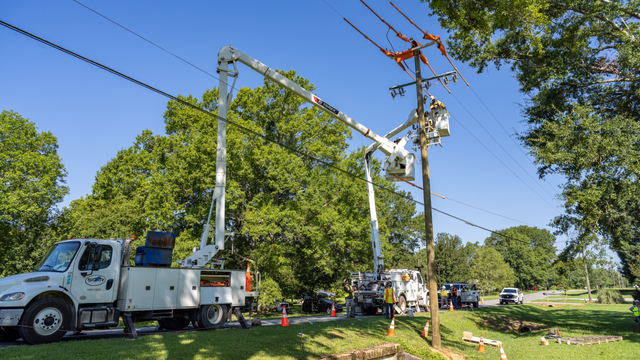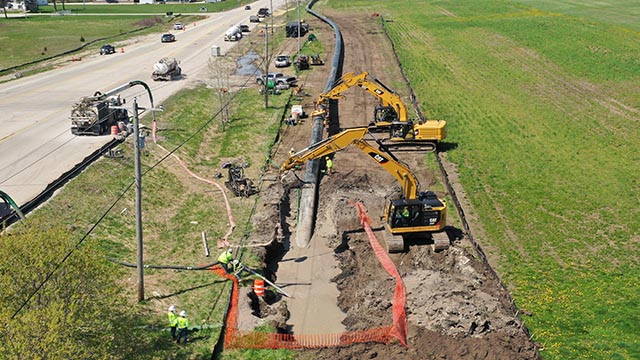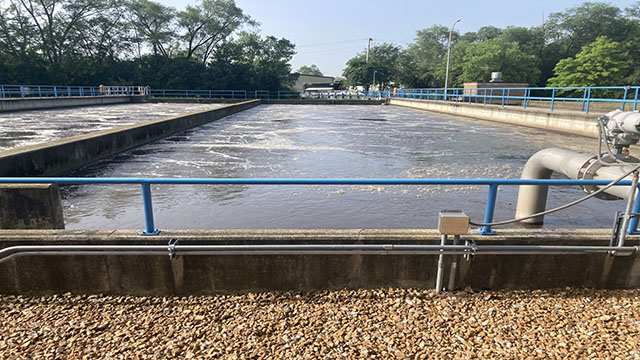By Deepa Poduval, Associate Vice President, Industry Executive Advisory & Planning
As the COVID-19 pandemic continues to upend markets around the world, our clients are facing a landscape of increasing uncertainty that will be challenging to navigate. While utilities are resilient, having experienced and weathered crises in the past, the unique and unprecedented nature of this pandemic and its consequences are creating an entirely new experience.
“The coronavirus pandemic and related economic worries drove a steep drop in market capitalization during the first quarter of 2020 among the top 20 U.S. utilities,” S&P Global reported recently. As of March 31, the group recorded a total market capitalization of $682.87 billion – down 13 percent from the $783.97 billion reported on December 31, 2019.
Deepa Poduval, Senior Managing Director and Associate Vice President for Black & Veatch Management Consulting, addresses the potential impacts of COVID-19 on our utility clients.
The Impact on Utilities
One of the key and unexpected outcomes of the pandemic is the degree of loss of demand from both commercial and industrial sectors due to protracted lockdowns acoss the nation. As an indication of the extent of potential pain, utility consumption in China – which experienced a prolonged lockdown – fell by 25 percent in early 2020 when compared to 2019. Driven by unanticipated and extended constraint on economic activity, an economic downturn is expected to prolong the period of decreased demand.
Here in the U.S., we expect utilities to see revenue challenges moving forward. Revenue decoupling mechanisms position many U.S. utilities to cope with lower demand better than the 2008-2009 financial crisis. However, various costs that are being incurred by utilities do need to be addressed, including collection shortfalls, continuing service to non-paying customers, and increased operational burdens from managing a distributed workforce, all while providing uninterrupted service during a period of significant constraints.
With the economic downturn, riders and other regulatory constructs that support rate recovery will be less attractive, as both consumers and regulators will have less appetite for any resultant increase in customer bills. Regulatory solutions that balance the interests of consumers and shareholders in the near-term – as well as the long-term – will become even more critical. Identifying strategic approaches and expert support that can deliver creative rate making and regulatory solutions across jurisdictions will be valuable for utilities as they prepare to navigate this regulatory landscape.
Read more: Gas Utility Regulatory Responses During Recessionary Periods
Unprecedented Operational Challenges
Utilities, with varying degrees of success, are accustomed to responding to significant turmoil, which historically has been driven by extreme weather events. Asset damage, temporary service interruptions and expanded needs for field crews to enable service restoration are operational challenges that utilities have always contended with. However, rarely have they been asked to continue providing essential services under months-long social distancing protocols designed to lower the risk of contagion by COVID-19.
The dual objectives of keeping control rooms staffed and operational and crews out in the field completing critical projects – all while protecting the health and safety of their workforce – is unchartered territory for utilities. Just as first responders, hospitals, grocery stores and other essential services have had to adapt their operational models to continue to perform their societal roles, utilities have had to adapt and be agile, learning as they go. For example, utilties are carefully tracking rates of infection within their service territories and planning appropriate protections to safeguard their field and office staff. Utilities may also find that they have new staffing needs, particularly as they switch to managing a distributed, remote workforce.
To compound these challenges, these critical workers are also having to juggle their obligations alongside unusual family and childcare responsibilities, on an extended basis, without an end date on the horizon. More than ever before, additional safety risks attributable to a distracted workforce apply to current conditions and need to be guarded against.
Safety & System Integrity Implications
With utilities working to tightly manage capital and operating expenses in this new rate-sensitive and revenue-challenged world, decreased investment may drive material implications for system safety. The already significant challenges of managing aging systems could become compounded. Although we may see delayed resilience programs, long-term resilience planning – regardless of market environment – will remain a critical element of any utility’s business continuity plan. Robust asset management strategies, increased intimacy with asset data and adoption of technology will become critical cornerstones to manage risk in a future with increased constraints on investments.
Traditionally, while this sector has been measured in its adoption of digital transformation initiatives, current global events are driving utilities to re-examine how technology can help achieve critical operational and safety goals. For example, using remote technologies to support smaller work crews, evaluate work more quickly and efficiently, and help stabilize critical situations.
The impact of COVID-19 is also shedding light on the limits of legacy systems. Clients are reexamining their investment plans and uncovering new technology opportunities that provide a new view on resiliency. As a trusted partner, Black & Veatch can bring expertise, helping to fill knowledge gaps around new tools and technology and their implementation to allow utilities to focus on business continuity.
Finding Opportunities
Long term, we expect to see this unprecedented event drive utilities to closely evaluate their data, allowing them to gain key understanding on how to improve or potentially re-organize operations for newly warranted efficiency and management improvements. For utilities, the post-pandemic world could be a new frontier of heightened efficiency and opportunity.
Utilities will continue to face unprecedented challenges as the global economy experiences the fallout from COVID-19. But even as the pandemic continues to trigger recessionary conditions, and we see economic recovery slowed by mandatory health and safety constraints, utilities can pivot to address current concerns. As a lifeline infrastructure service, utilities will remain critical, particularly as the world works to reopen and stabilize its markets. The right management decisions supported by industry expertise can accelerate the journey to a more adaptive, efficient and technology-enabled utility emerging on the other side.

The Economic Impact of COVID-19 for Utilities
While utilities are resilient, having experienced and weathered crises in the past, the unique and unprecedented nature of this pandemic and its consequences are creating an entirely new experience. As of March 31, the group recorded a total market capitalization of $682.87 billion – down 13 percent from the $783.97 billion reported on December 31, 2019. Deepa Poduval, Senior Managing Director and Associate Vice President for Black & Veatch Management Consulting, addresses the potential impacts of COVID-19 on our utility clients.






